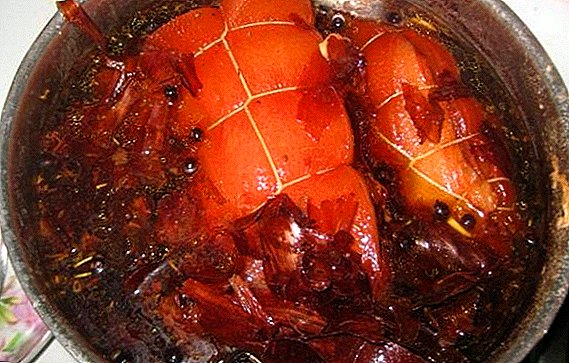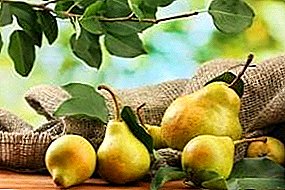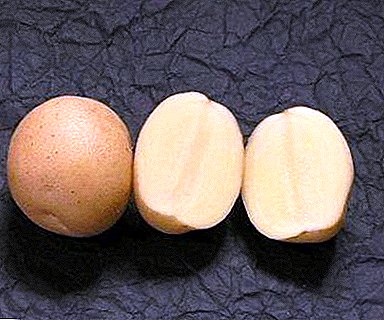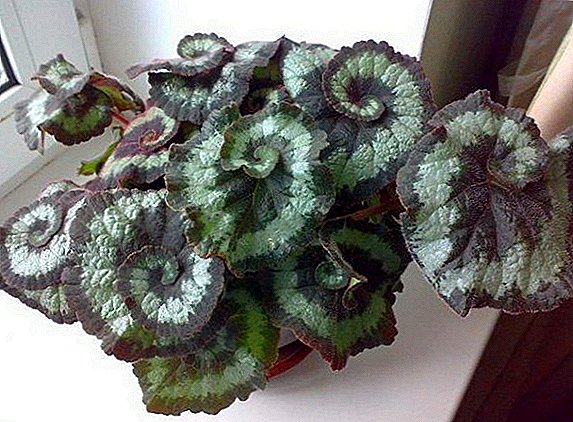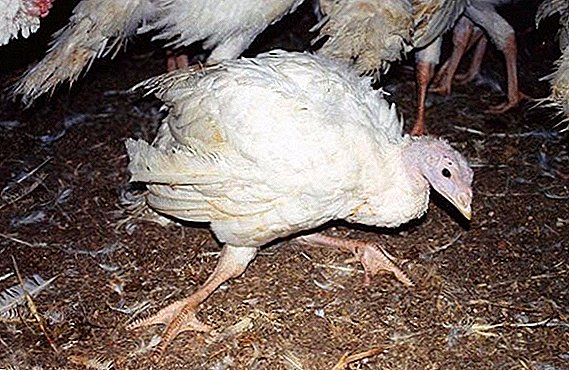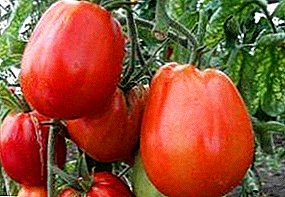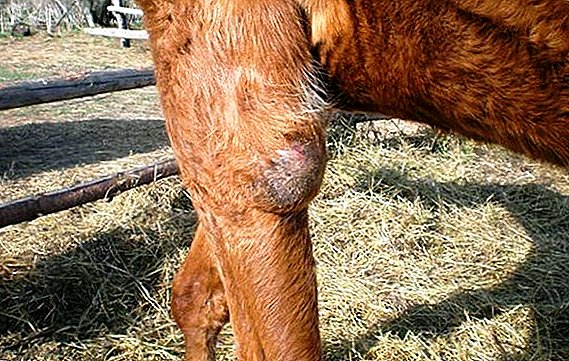 Despite the large size and physical strength, cattle are still subject to various diseases. One of the widespread and very dangerous ailments is the so-called bursitis. Its symptoms, causes and treatment are useful for all breeders to know.
Despite the large size and physical strength, cattle are still subject to various diseases. One of the widespread and very dangerous ailments is the so-called bursitis. Its symptoms, causes and treatment are useful for all breeders to know.
What is bursitis
The small closed cavity that forms around the joints is called the bursa, and scientifically the synovial sac (pouch). Its formation is the result of the displacement of the loose connective tissue of the ligaments and tendons. In places where maximal friction of the tendons or muscles occurs, an animal may begin an inflammatory process.
Important! The pre-carpal bursa is most sensitive to injuries and inflammations - most often cows develop bursitis there.Inflammation of the synovial sac (pouch) is bursitis. However, do not associate bursitis only with the joints of the legs. It is believed that cows are also prone to damage and disease, the jaw joints and maklok are part of the ilium, where numerous muscles are fixed.
Causes of development in animals
The most common causes of this disease are:
- closed injuries (may occur from blows, bruises, or when an animal has stumbled unsuccessfully);
- open injuries (including fractures or wounds);
- pus (if this process occurs in tissues that are close to the affected areas);
- infectious diseases (tuberculosis, brucellosis, sepsis);
- limited space (if cows are tight - they can hurt each other);
- hypothermia (causes the development of infectious diseases).

Varieties
Experts distinguish two main types of bursitis - aseptic and purulent.
Learn more about diseases of the joints of cattle.
Aseptic view
The most visible symptom of aseptic bursitis is the presence of a round (in rare cases - oval) swelling. 
In this regard, the cow has the following symptoms:
- the animal limps;
- the temperature rises;
- frequent breathing and pulse.
Aseptic bursitis is acute and chronic. In acute cases, the swelling is hardly noticeable, and even the lameness may be slight. If the disease has become chronic - the skin of the bursa is very thickened, the cow is very lame and is experiencing pain.
Also, aseptic bursitis is divided into four subspecies: serous, serous-fibrinous, fibrous and ossifying.
Serous
This type of disease can be called the easiest, because the fluid that accumulates in the bursa can dissolve itself. Although, if the cow is re-injured - the disease can become chronic.
Read more about what diseases can hurt cows and how to treat them.
Serous-fibrinous and fibrous

In the process of blood coagulation, a protein called fibrin is actively involved. If this substance accumulates a large amount, bursitis becomes sero-fibrinous. The main feature of this is tangible bursa density.
In addition, the skin near the joint may even grow together with it, which will impede the movement of the animal. If this type of treatment is wrong or untimely, it can become fibrous (there will be pressure sores on the skin around the bag).
Ossifying
Worst of all, if you find a cow signs of ossifying bursitis. If the wall of the bursa is solid and you notice layers of lime on it, this means that the bag grows together with the bones. The cow cannot walk, her metabolism is severely disturbed (the wrong ratio of phosphorus and calcium). In this case, bursitis becomes irreversible.
Did you know? Cows are not such stupid animals as they are considered to be. So, it is worth highlighting their ability to learn from the mistakes of others. It is noticed that if one individual is electrocuted from the fence, the rest will take the information into account and will stay away from the fence.
Purulent look
Not for nothing, veterinarians talk about the need to maintain cleanliness in the barns. After all, enough pathogenic bacteria get into the body, as they can easily stay there for up to 3-4 months. If the animal is injured and the microbes get into the bag - purulent bursitis can not be avoided.  This disease is characterized by the presence of sores on the bulge. If there is no wound, there may be pus when piercing. In addition, experts take a sample using a conventional syringe - the presence of pus in it also means that the animal suffers from this particular disease. Purulent bursitis can also be chronic and acute.
This disease is characterized by the presence of sores on the bulge. If there is no wound, there may be pus when piercing. In addition, experts take a sample using a conventional syringe - the presence of pus in it also means that the animal suffers from this particular disease. Purulent bursitis can also be chronic and acute.
We recommend to learn more about the anatomy of a cow.
Acute
Acute purulent bursitis has this name just because the pain and swelling of the joint occur quickly. Limping and trembling are the main signs of an acute form. The danger is that the level of lactation decreases. This can lead to malnutrition in calves.
Chronic
If a purulent fistula is found on the bursa, it means that the disease has assumed a chronic form. From the wound can be mucus, and even pus flow. Doubt can dispel only puncture bursa.  Changes in the bursa in chronic inflammation: A - villus thickening and connective tissue ridges in the bursa region; B - the formation of a thick fibrous capsule
Changes in the bursa in chronic inflammation: A - villus thickening and connective tissue ridges in the bursa region; B - the formation of a thick fibrous capsule
What to do, how to treat bursitis in a cow
Depending on the stage and type of bursitis, an individual treatment is selected. To cure serous bursitis, it is enough to attach a cold object to the bursa, then roll it up and allow the cow to rest in warmth.
If pus was found in the bag, the treatment will necessarily include perforation:
- A puncture is made in the bag to get rid of accumulated pus.
- Antibiotics are introduced into the resulting cavity to prevent re-pyogenesis. Be sure to add novocaine - this will relieve the bursa.
- So that the skin around the bag does not harden, it is rubbed with special gels.
- After that, you need to make a bandage. But bandaging the bursa should be very careful and cautious, since the bandage should not be very weak or, conversely, too tight.
Important! Consider that increased weight increases the load on the joints. This means that the larger the cow (for example, during pregnancy), the more carefully you need to handle it.
If you notice the deformation (sprawling) of the bag, you need to enter a special solution of iodine and alcohol into the cavity. It destroys the bursa from the inside and prevents further accumulation of fluid.
Video: hock bursitis treatment Also in the process of treatment, regular washing with hydrogen peroxide and furatsilina solution is necessary. To strengthen the joints will help special vitamin complexes, in particular, rich in calcium.
Did you know? Punctuality, the ability to memorize the faces / faces of their close friends, as well as 11 different types of mooing speak in favor of cow intelligence.
Preventive action
Any disease is much easier to prevent than to cure.
Here is a set of preventive measures to protect livestock from bursitis of any kind:
- Places grazing. If you have a choice, do not allow cows to graze on rocky terrain. It is worth paying attention to the plants - they should not be prickly.
- Heat. In the barn should be warm, but do not forget about regular ventilation. If the floor is cold - it is necessary to have comfortable bedding.
- Hygiene. Regular cleaning is a prerequisite for the health and safety of livestock.
- Feeders. When designing a room for keeping cows, consider their dimensions so that they do not hurt each other while eating.
- Transportation. If you need to transport your flock - do it, strictly following the rules of transportation to ensure the safety of animals.
 In addition, regular examinations of the veterinarian will allow time to detect the development of any disease. By following these rules, you can protect not only cows, but also any kind of cattle from bursitis. And if you have already faced the disease, you will be fully armed in the fight against it.
In addition, regular examinations of the veterinarian will allow time to detect the development of any disease. By following these rules, you can protect not only cows, but also any kind of cattle from bursitis. And if you have already faced the disease, you will be fully armed in the fight against it.


